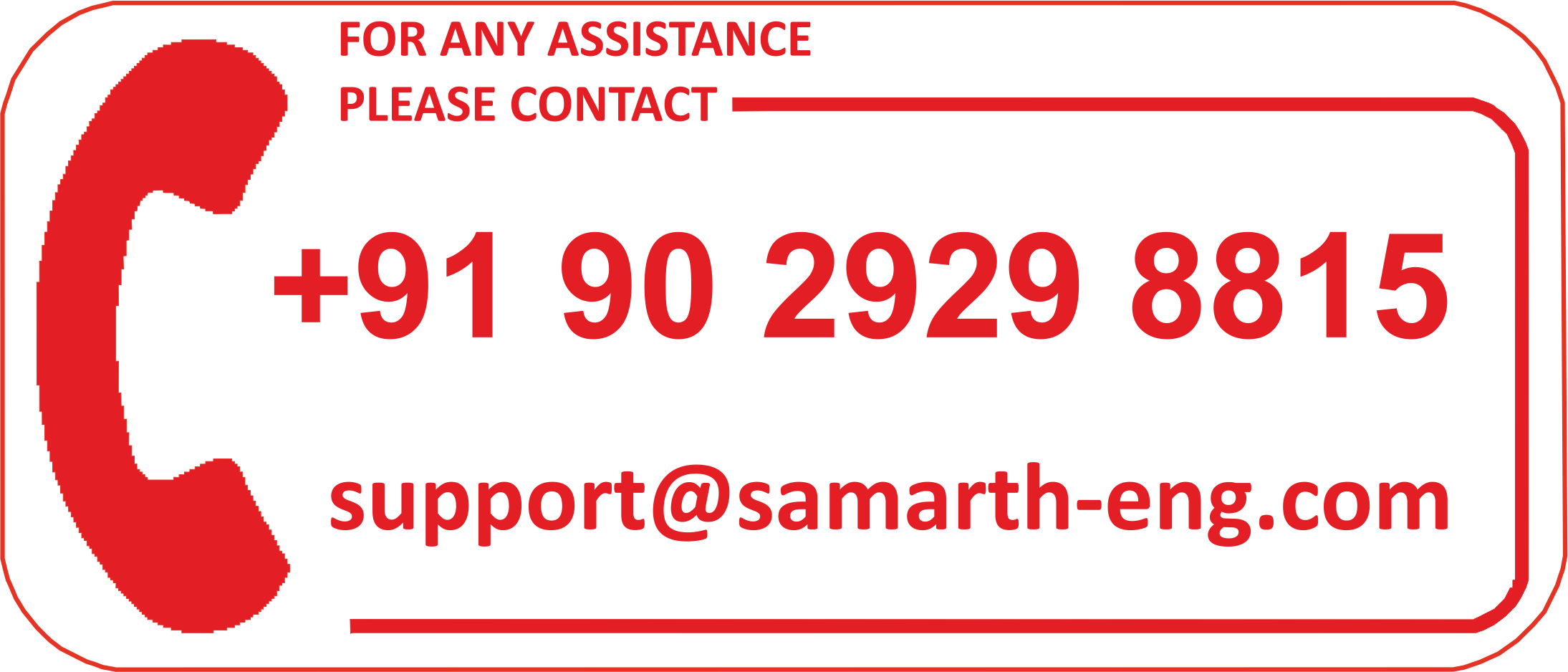Fire Fighting System
Monthly checking of the extinguisher will be done as per IS 2190 : 1992.
Complete examination of the extinguisher, weight should be checked compulsory.
Examine the extinguisher externally and internally for any corrosion or damage.
Checking of all components of extinguisher (i.e. inner container / cap assembly / washers /
discharge tube etc.) if any parts damaged replace by new one immediately and the items will be supplied from fire station or separate charge for supply of items will be admissible, So that price list of spare items such as washer, inner container, cartridges, discharge tube, nozzles, cap assembly, safety pin/cap/clip etc. will also be submitted with the offer.
Oiling and greasing of all threaded components compulsory.
Stirring /shaking or powder in DCP extinguishers if required the powder should be removed and refilled.
Refilling of extinguishers if necessary. (Refills will be supplied from Samarth Engineering or extra charges /cost for refilling is admissible, so that price lists of refills for 90 Ltrs. and 50 Ltrs. Cap. Mech. Foam extinguisher will also be submitted along with the offer).
Washing of water, foam type and cleaning DCP extinguishers from inside before refilling.
Washing of Co2 gas cartridges fitted inside the extinguishers and Co2 extinguishers for checking gas content and changing if required (refilled gas cartridges will be provided from Samarth Engineering or extra costs for refilling of cartridges are admissible).
Records of date wise checking extinguisher, refilling / servicing / pressure testing etc.
A visual inspection of every device in the “List of Equipment” will be performed to ensure that no facility changes have occurred which could affect equipment or system performance based on the original design.
Every device and control function shown in the “List of Equipment” will be physically activated to ensure its functionality as designed and installed. Testing takes into consideration the AHJ (Authority Having Jurisdiction) requirements, local ambient conditions, and the manufacturer’s recommendations. Samarth Engineering will follow NFPA 72 recommended test methods and frequencies as a minimum guideline for system testing
System components will be cleaned, recalibrate and retested if necessary, to ensure continued performance and reduce the risk of component or system failure. During scheduled visits, minor repairs will be made, such as replacement of faulty detectors or damaged devices.
During Checking any fault if indicated on any of the panels and rectifies the same immediately
On servicing, check free opening and closing of valve.
Lubricate if necessary.
Confirm the seals are not worn-out
The fire hose should be run-out and checked for leakages
The pump must be checked to ensure it is giving rated pressure
Another aspect of hydrant system is that it can incorporate foam units to cater for fires involving different classes like liquids and other risks.
Check the free movement of the reel and condition of control arm.
Ensure that the rubber hose is not broken or worn out
Check for leakages normally caused by worn-out ‘O’ rings which should be replaced.
Ensure the nozzle is giving the three modes of jet, spray, and jet/spray.
Confirm the gate valve is closing and opening
Pump run at least 10 min and checking records Section and outlet pressure Circulation relief valve flow Packing glands for slight discharge and adjust, if necessary Packing boxes, bearing and pump casing for overheating











